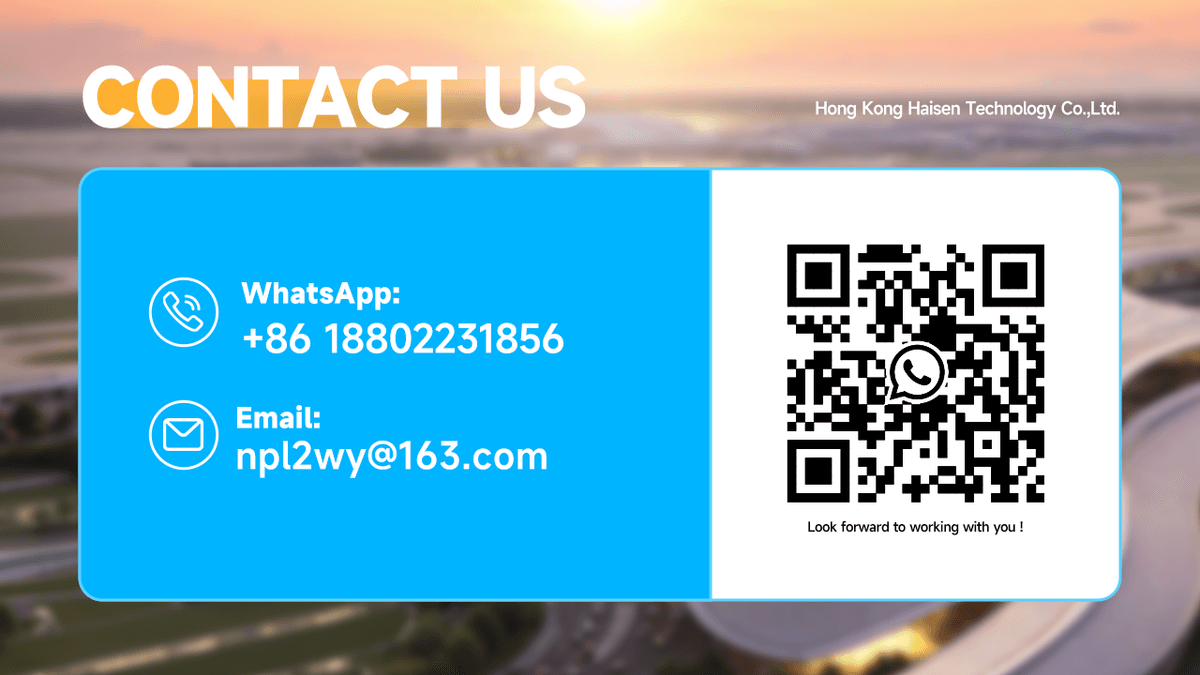The Transmissometer, also known as a Visibility Meter, is an indispensable instrument in ensuring airport weather safety, providing accurate and real-time measurements of visibility conditions that are critical for safe takeoffs, landings, and ground operations. Without the Transmissometer, pilots, air traffic controllers, and airport operators would lack the precise data needed to make informed decisions in adverse weather, increasing the risk of accidents and flight disruptions.
Airports are highly sensitive to weather conditions, and visibility is one of the most crucial factors affecting aviation safety. Poor visibility due to fog, rain, snow, or haze can significantly impact aircraft operations, leading to delays, diversions, or even cancellations. The Transmissometer addresses this by continuously monitoring atmospheric visibility, offering quantitative data that helps maintain the highest levels of safety while minimizing operational disruptions. In this extensive blog post, we will delve into the functionality, types, installation, maintenance, and future trends of the Transmissometer, highlighting its pivotal role in safeguarding airport operations.
Understanding Transmissometer: What It Is and How It Works
A Transmissometer is a specialized device designed to measure the atmospheric visibility by determining the extent to which light is transmitted through the air. It operates on the principle that the visibility of objects is directly related to the amount of light scattered or absorbed by particles and molecules in the atmosphere, such as fog droplets, rain, snowflakes, dust, or smoke. By quantifying this light transmission, the Transmissometer provides a precise measure of visibility, typically expressed in meters or feet.
The basic setup of a Transmissometer consists of two main components: a transmitter and a receiver, separated by a known distance (usually between 50 meters and 2 kilometers). The transmitter emits a collimated beam of light (often infrared or visible light), which travels through the atmosphere to the receiver. The receiver measures the intensity of the light that reaches it, comparing it to the intensity of the light emitted by the transmitter. The difference in intensity is used to calculate the atmospheric extinction coefficient, which is then converted into a visibility value using established formulas.
For example, if the transmitter emits a light beam with a known intensity, and the receiver detects a lower intensity due to scattering or absorption, the Transmissometer can determine how much light was lost. This loss is directly proportional to the concentration of particles in the air, which in turn indicates the visibility. A higher extinction coefficient means more light is lost, resulting in lower visibility, while a lower coefficient indicates better visibility.
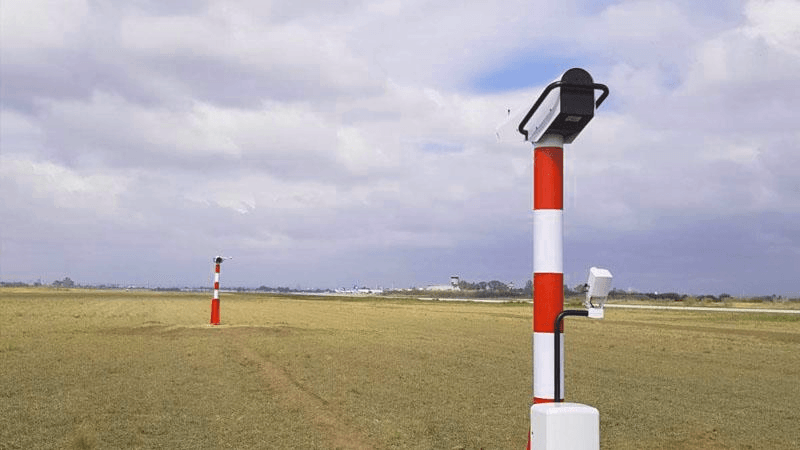
Modern Transmissometers often incorporate advanced technologies to enhance accuracy and reliability. This includes temperature and humidity sensors to compensate for environmental factors that can affect light transmission, as well as built-in calibration systems to ensure consistent measurements over time. Some models also feature multiple wavelength options, allowing them to distinguish between different types of atmospheric particles, such as fog and rain, providing more detailed visibility data.
The Importance of Transmissometer in Airport Operations
The Transmissometer plays a vital role in various aspects of airport operations, directly contributing to safety, efficiency, and regulatory compliance. Here are some key reasons why the Transmissometer is essential for airports:
- Safe Takeoffs and Landings: The most critical role of the Transmissometer is to provide pilots with accurate visibility data during takeoff and landing. Pilots rely on visibility information to determine if conditions meet the minimum requirements for these operations (known as Minimum Visibility Requirements or MVR). For example, a pilot may only be authorized to land if visibility is at least 800 meters, as specified by aviation regulations. The Transmissometer ensures that this data is precise and up-to-date, allowing pilots to make safe decisions.
- Air Traffic Control: Air traffic controllers use data from the Transmissometer to manage air traffic flow and maintain safe separation between aircraft. In low-visibility conditions, controllers may need to increase the distance between departing and arriving aircraft or adjust flight paths to avoid congestion. Accurate visibility measurements from the Transmissometer enable controllers to make these adjustments effectively, reducing the risk of collisions.
- Ground Operations Safety: Poor visibility is not only a hazard for airborne aircraft but also for ground operations, such as taxiing, baggage handling, and aircraft maintenance. The Transmissometer provides visibility data for the entire airport surface, helping ground crews navigate safely and avoid accidents involving aircraft, vehicles, or personnel.
- Regulatory Compliance: Aviation authorities, such as the International Civil Aviation Organization (ICAO) and the Federal Aviation Administration (FAA), mandate that airports maintain certain visibility standards for different operations. The Transmissometer is a key tool in demonstrating compliance with these regulations, as it provides objective, quantifiable data that can be audited and verified.
- Operational Efficiency: By providing accurate visibility data, the Transmissometer helps airports minimize disruptions caused by weather. For example, if the Transmissometer indicates that visibility is improving, airport operators can adjust schedules to resume flights sooner, reducing delays and passenger inconvenience. Conversely, if visibility is deteriorating, they can proactively delay or cancel flights to avoid safety risks and further disruptions.
- Weather Forecasting and Planning: Data from the Transmissometer is also used in weather forecasting models to predict future visibility conditions. This helps airports plan for upcoming weather events, such as fog or snowstorms, and implement contingency measures to maintain operations as much as possible.
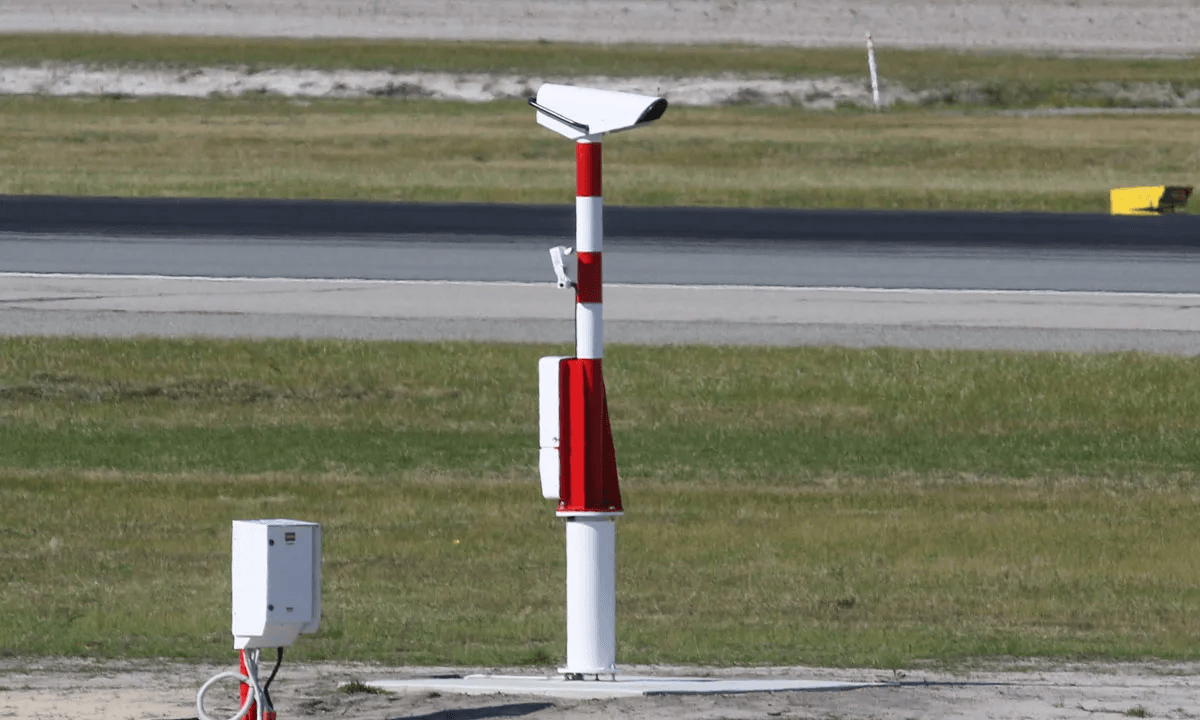
Types of Transmissometers Used in Airports
There are several types of Transmissometers designed to meet the specific needs of airport operations, varying in terms of range, accuracy, and installation location. Here are the most common types:
- Forward Scatter Transmissometer: This type of Transmissometer measures the amount of light scattered forward by atmospheric particles. It consists of a transmitter and a receiver placed at a small angle to each other (typically 35 degrees), rather than directly opposite. Forward scatter Transmissometers are compact and cost-effective, making them ideal for measuring visibility over short distances (up to 1 kilometer). They are commonly used in areas such as taxiways, aprons, and approach zones where short-range visibility is critical.
- Backscatter Transmissometer: Backscatter Transmissometers measure the light scattered backward towards the transmitter by atmospheric particles. Unlike forward scatter models, they have a single unit that combines both the transmitter and receiver, eliminating the need for a separate receiver unit. This makes them easier to install and maintain, especially in remote or hard-to-reach locations. Backscatter Transmissometers are often used for measuring visibility over longer distances (up to 10 kilometers) and are suitable for runway approach areas and en-route visibility monitoring.
- Long-Range Transmissometer: As the name suggests, long-range Transmissometers are designed to measure visibility over distances of 2 kilometers or more. They use a powerful light source and a highly sensitive receiver to detect light transmission over long paths, making them ideal for runway approaches and departure corridors where visibility over extended distances is crucial. These Transmissometers are often used in conjunction with other weather instruments to provide a comprehensive picture of weather conditions.
- In-Runway Transmissometer: Installed directly in the runway, these Transmissometers provide real-time visibility data for the critical runway surface. They are designed to withstand the weight of aircraft and harsh weather conditions, ensuring accurate measurements even during takeoffs and landings. In-runway Transmissometers are particularly important for low-visibility operations, such as Category III instrument landing system (ILS) approaches, where visibility requirements are extremely strict (as low as 50 meters).
- Mobile Transmissometer: Mobile Transmissometers are portable units that can be deployed temporarily in areas where permanent installations are not available or during special events. They are often used for maintenance checks, temporary weather monitoring, or to supplement existing Transmissometer networks during periods of high demand. Mobile units are lightweight and easy to transport, making them a flexible solution for airports with varying visibility monitoring needs.
Key Features of a High-Quality Transmissometer
When selecting a Transmissometer for airport use, several key features are essential to ensure accurate, reliable, and efficient operation. These features include:
- High Accuracy and Precision: The Transmissometer must provide measurements with a high degree of accuracy, typically within ±5% of the actual visibility. Precision is also crucial, as small variations in readings can affect safety decisions. Advanced calibration systems and stable light sources help maintain accuracy over time.
- Wide Measurement Range: A good Transmissometer should be able to measure visibility over a wide range, from very low visibility (less than 50 meters) to clear conditions (up to 20 kilometers or more). This ensures that it can handle all types of weather conditions, from dense fog to clear skies.
- Fast Response Time: The Transmissometer should provide real-time or near-real-time measurements, with a response time of less than 10 seconds. This allows pilots, controllers, and operators to react quickly to changing visibility conditions.
- Robust Construction: Airports are harsh environments, with exposure to extreme temperatures, rain, snow, wind, and vibration from aircraft. The Transmissometer must be built to withstand these conditions, with durable materials such as stainless steel and weatherproof enclosures.
- Low Maintenance Requirements: To minimize downtime, the Transmissometer should require minimal maintenance. Features such as self-cleaning optics, sealed components, and remote diagnostic capabilities can reduce the need for frequent servicing.
- Compatibility with Airport Systems: The Transmissometer should be able to integrate seamlessly with other airport systems, such as air traffic control systems, weather monitoring networks, and flight information display systems (FIDS). This allows for easy data sharing and ensures that visibility data is accessible to all relevant personnel.
- Compliance with Standards: The Transmissometer must meet international standards, such as those set by ICAO, FAA, and the International Electrotechnical Commission (IEC). Compliance ensures that the device is reliable and that its measurements are accepted by aviation authorities.
- Redundancy: To ensure continuous operation, high-quality Transmissometers often include redundancy features, such as backup power supplies, duplicate sensors, or automatic switching to a standby unit in case of failure. This minimizes the risk of data loss during critical operations.
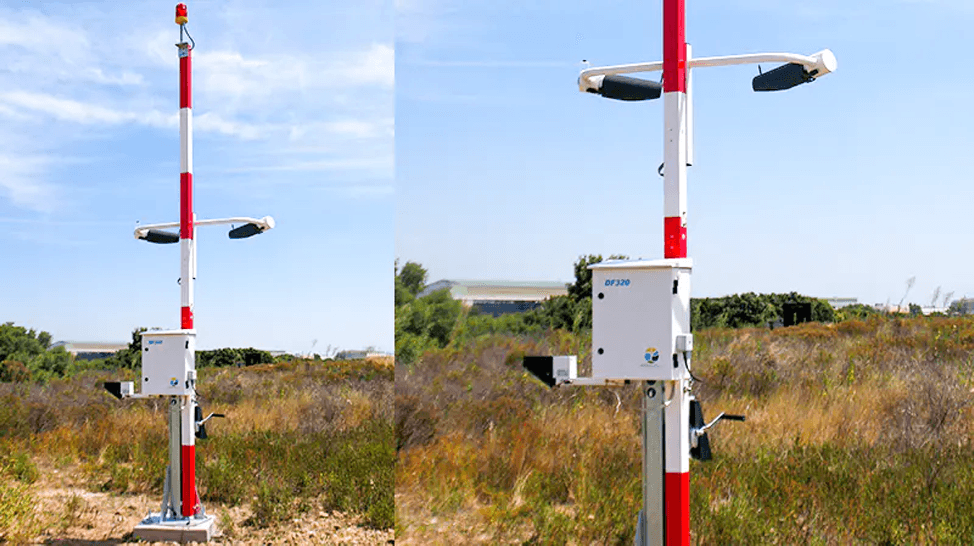
Installation and Placement of Transmissometers in Airports
Proper installation and placement of Transmissometers are critical to ensuring accurate and representative visibility measurements. The location of the Transmissometer must be carefully chosen to avoid interference from obstacles, light sources, or other factors that could affect light transmission. Here are key considerations for installation and placement:
- Runway Approaches and Departures: Transmissometers are typically installed along the approach paths of runways (known as the Instrument Landing System or ILS path) to measure visibility for arriving aircraft. They are placed at intervals (usually every 500 meters) along the approach, starting from the runway threshold and extending several kilometers outward. This provides pilots with visibility data at various points along their descent path.
- Runway Threshold and Midpoint: A Transmissometer is often installed near the runway threshold to measure visibility at the point where the aircraft touches down. Another unit may be placed at the midpoint of the runway to provide visibility data for the entire runway length.
- Taxiways and Aprons: For ground operations, Transmissometers are installed along taxiways, aprons, and other areas where aircraft taxi, park, or are serviced. These units help ground crews and pilots navigate safely in low-visibility conditions.
- Avoiding Obstructions: The path between the Transmissometer's transmitter and receiver must be clear of obstructions such as buildings, trees, or vehicles, which can block or scatter the light beam. The installation should also avoid areas with excessive turbulence, such as near jet blast from aircraft engines, which can disrupt the air and affect measurements.
- Lighting Interference: The Transmissometer's light beam should not be affected by other light sources, such as runway lights, taxiway lights, or nearby buildings. Shielding or filtering may be used to prevent interference from ambient light, ensuring that the receiver only detects the light from the transmitter.
- Height and Orientation: The transmitter and receiver should be mounted at a consistent height (typically 1.5 to 2 meters above the ground) to ensure that the light beam is at the same level as the pilot's line of sight during takeoff and landing. They should also be aligned precisely to ensure maximum light transmission between the two units.
- Environmental Considerations: The installation site should be chosen to minimize exposure to direct sunlight, which can cause glare, and to protect the Transmissometer from extreme weather conditions. In areas prone to snow or ice, heated enclosures or automatic wipers may be installed to keep the optics clean.
Maintenance and Calibration of Transmissometers
Regular maintenance and calibration are essential to ensure that Transmissometers continue to provide accurate and reliable measurements. Here are the key aspects of Transmissometer maintenance:
- Regular Inspections: Transmissometers should be inspected regularly (daily or weekly) to check for physical damage, dirt, or debris on the optics, and to ensure that all components are functioning properly. Inspectors should check the alignment of the transmitter and receiver, the condition of cables and connectors, and the integrity of the weatherproof enclosures.
- Cleaning the Optics: The transmitter and receiver lenses can become dirty due to dust, rain, snow, or bird droppings, which can block or scatter the light beam and affect measurements. The optics should be cleaned regularly using a soft, lint-free cloth and a mild cleaning solution. Some Transmissometers have self-cleaning features, such as automatic wipers or air blowers, which can reduce the need for manual cleaning.
- Calibration: Calibration is the process of adjusting the Transmissometer to ensure that its measurements are accurate. This involves comparing the Transmissometer's readings to a known standard, such as a calibrated light source or a reference Transmissometer. Calibration should be performed at least once a year, or more frequently if the device is exposed to harsh conditions or if measurements are suspected to be inaccurate.
- Software Updates: Many modern Transmissometers have software that controls their operation and data processing. Regular software updates are necessary to address bugs, improve performance, and add new features. These updates can often be installed remotely, reducing downtime.
- Replacement of Components: Over time, components such as light sources, detectors, or power supplies may wear out and need to be replaced. Replacement parts should be sourced from the manufacturer to ensure compatibility and maintain accuracy.
- Environmental Testing: Transmissometers should be tested periodically under different environmental conditions (such as high humidity, extreme temperatures, or heavy rain) to ensure that they continue to function correctly. This helps identify any issues that may only arise in specific weather conditions.
- Record Keeping: Detailed records of all maintenance, inspections, calibrations, and repairs should be kept. This documentation helps track the performance of the Transmissometer over time, identifies trends in its accuracy, and ensures compliance with regulatory requirements.
Integration of Transmissometer Data with Airport Systems
The data collected by Transmissometers is most useful when integrated with other airport systems, allowing for seamless information sharing and decision-making. Here are some key systems that integrate with Transmissometer data:
- Air Traffic Control Systems: Transmissometer data is fed directly into air traffic control (ATC) systems, where it is displayed on controllers' screens alongside other weather information, such as wind speed and direction, temperature, and precipitation. This allows controllers to make informed decisions about aircraft sequencing, spacing, and routing based on current visibility conditions.
- Weather Monitoring Networks: Transmissometers are part of a larger network of weather instruments at airports, including anemometers (wind speed), barometers (pressure), and rain gauges. Data from all these instruments is integrated into a central weather monitoring system, providing a comprehensive overview of weather conditions. This integrated data is used to generate weather reports, forecasts, and alerts for pilots and airport operators.
- Flight Information Display Systems (FIDS): Transmissometer data is used to update FIDS, which display flight status information for passengers. For example, if visibility is below the minimum required for takeoff, FIDS can show delays or cancellations, keeping passengers informed.
- Pilot Information Systems: Pilots access Transmissometer data through various systems, such as the Automatic Terminal Information Service (ATIS), which provides continuous updates on weather conditions, including visibility. Pilots can also receive real-time visibility data via their aircraft's avionics systems, allowing them to monitor conditions during their approach or departure.
- Airport Operations Control Center (AOCC): The AOCC is responsible for coordinating all airport operations, and Transmissometer data is a key input for their decision-making. AOCC staff use visibility data to manage ground operations, schedule maintenance, and coordinate with airlines and air traffic control to minimize disruptions.
- Weather Forecasting Models: Transmissometer data is fed into numerical weather prediction models, which use it to improve the accuracy of visibility forecasts. This helps airports anticipate changes in weather conditions and plan accordingly, such as deploying snow removal equipment or preparing for fog.
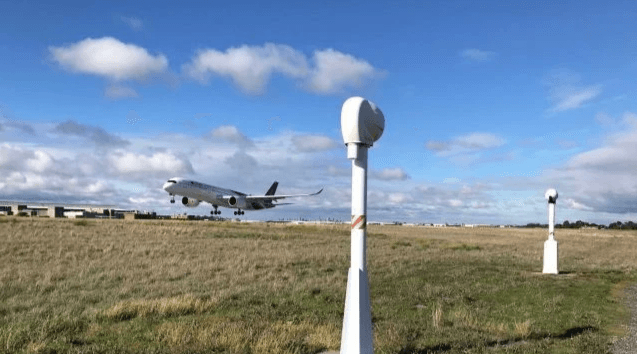
Regulatory Standards for Transmissometers in Aviation
Transmissometers are subject to strict regulatory standards to ensure that their measurements are accurate, reliable, and consistent across different airports. Here are the key regulatory bodies and standards that govern Transmissometers:
- International Civil Aviation Organization (ICAO): ICAO sets global standards for aviation safety, including requirements for visibility measurement. According to ICAO Annex 3 (Meteorological Service for International Air Navigation), airports must provide visibility data using instruments that meet specific accuracy and performance criteria. Transmissometers must be able to measure visibility in the range of 50 meters to 10 kilometers (or more) with an accuracy of ±10% for visibility values greater than 1,000 meters and ±50 meters for values less than 1,000 meters.
- Federal Aviation Administration (FAA): In the United States, the FAA specifies requirements for Transmissometers in its Advisory Circulars (ACs) and Technical Standard Orders (TSOs). For example, TSO-C142 outlines the performance standards for forward scatter visibility sensors, including accuracy, response time, and environmental durability. The FAA also requires that Transmissometers be calibrated regularly and that their data be integrated with air traffic control systems.
- International Electrotechnical Commission (IEC): The IEC develops international standards for electrical and electronic equipment, including Transmissometers. IEC 62493 specifies the performance requirements and test methods for visibility sensors used in aviation, covering aspects such as measurement range, accuracy, environmental resistance, and electromagnetic compatibility.
- European Union Aviation Safety Agency (EASA): EASA adopts and implements ICAO standards within the European Union, with additional requirements for Transmissometers used in EU airports. EASA regulations require that Transmissometers undergo rigorous testing and certification before they can be used in EU airports, ensuring that they meet the highest standards of quality and reliability. EASA also mandates regular audits of Transmissometer installations and maintenance procedures to verify compliance.
- National Aviation Authorities: Many countries have their own national aviation authorities that impose additional requirements on Transmissometers. For example, Transport Canada specifies standards for visibility measurement instruments used in Canadian airports, aligning with ICAO standards but with some country-specific modifications. These national regulations ensure that Transmissometers are adapted to local weather conditions and operational needs.
Common Challenges in Transmissometer Operations
Despite their importance, Transmissometers face several challenges in day-to-day operations that can affect their accuracy and reliability. Here are some of the most common challenges:
- Environmental Interference: Extreme weather conditions, such as heavy rain, snow, or high winds, can interfere with the Transmissometer's light beam, leading to inaccurate measurements. For example, snowflakes or raindrops can scatter the light, causing the Transmissometer to overestimate the extinction coefficient and report lower visibility than actual conditions. Similarly, high winds can create turbulence in the air, disrupting the light path and introducing errors.
- Optical Contamination: Dust, dirt, bird droppings, and other debris can accumulate on the Transmissometer's transmitter and receiver lenses, blocking or scattering the light beam. This can result in reduced light transmission, leading the device to incorrectly report lower visibility. In areas with high pollution or frequent bird activity, optical contamination is a persistent issue that requires regular maintenance.
- Calibration Drift: Over time, the Transmissometer's components, such as the light source or detector, can drift out of calibration, leading to inaccurate measurements. This drift can be caused by aging of components, temperature fluctuations, or exposure to harsh environmental conditions. Without regular calibration, the Transmissometer's readings may become unreliable, compromising safety decisions.
- Obstruction of the Light Path: The light path between the Transmissometer's transmitter and receiver can be obstructed by temporary or permanent obstacles, such as vehicles, construction equipment, or vegetation. Even a partial obstruction can block the light beam, causing the Transmissometer to report incorrect visibility values. In busy airports, where ground traffic is constant, this is a frequent challenge.
- Power Supply Issues: Transmissometers rely on a stable power supply to operate. Power outages or fluctuations can cause the device to shut down or produce erroneous readings. In remote areas of the airport, where power infrastructure may be less reliable, this can be a significant problem, leading to gaps in visibility data.
- Data Transmission Errors: The data collected by the Transmissometer must be transmitted to airport systems, such as air traffic control or weather monitoring networks. Transmission errors, caused by faulty cables, wireless interference, or network issues, can result in delayed or corrupted data, making it unavailable when needed most.
Strategies to Overcome Transmissometer Challenges
Addressing the challenges faced by Transmissometers requires a proactive approach, combining technical solutions, operational procedures, and regular maintenance. Here are effective strategies to overcome these challenges:
- Enhance Environmental Protection: To minimize the impact of extreme weather, Transmissometers should be equipped with protective features such as heated enclosures to prevent snow and ice buildup on optics, and wind shields to reduce turbulence in the light path. Some models also use adaptive algorithms that can compensate for the effects of rain or snow, adjusting the measurements to account for these conditions.
- Implement Automated Cleaning Systems: Installing automated cleaning systems, such as air blowers or wiper mechanisms, can help keep the Transmissometer's optics free from contamination. These systems can be programmed to activate at regular intervals or when sensors detect dirt on the lenses, reducing the need for manual cleaning and ensuring consistent performance.
- Establish a Rigorous Calibration Schedule: Regular calibration is essential to prevent calibration drift. Airports should establish a strict calibration schedule, with more frequent calibrations for Transmissometers in harsh environments. Using reference standards that are traceable to national or international metrology institutes ensures that calibrations are accurate and reliable. Additionally, implementing real-time calibration checks, where the Transmissometer compares its readings to a built-in reference source, can detect drift early.
- Monitor and Clear Obstructions: Regular patrols of Transmissometer installations can help identify and clear obstructions in the light path. Installing cameras or motion sensors near the Transmissometer can alert staff to temporary obstructions, such as vehicles or equipment, allowing for quick removal. Landscaping plans should also consider the Transmissometer's light path, ensuring that vegetation does not grow into the beam over time.
- Ensure Reliable Power Supply: To address power supply issues, Transmissometers should be connected to a backup power source, such as uninterruptible power supplies (UPS) or generators, to provide power during outages. Surge protectors can also be installed to protect the device from voltage fluctuations. In remote areas, solar-powered Transmissometers with battery storage can provide a reliable alternative to grid power.
- Improve Data Transmission Integrity: Using redundant data transmission paths, such as both wired and wireless connections, can ensure that data reaches its destination even if one path fails. Encrypting data during transmission prevents corruption, and error-checking protocols can detect and correct transmission errors. Regular maintenance of communication equipment, such as routers and cables, also helps to maintain reliable data transmission.
Case Studies: Transmissometer Ensuring Airport Safety
Real-world case studies highlight the critical role that Transmissometers play in ensuring airport safety during adverse weather conditions. Here are a few examples:
- Foggy Morning at a Major Hub Airport: A major international airport experienced dense fog with visibility dropping to less than 200 meters, a level that would normally ground all flights. However, the airport's network of Transmissometers provided real-time data showing that visibility was gradually improving in the runway approach zones. Air traffic controllers used this data to allow flights to land using Category II ILS approaches, which require a minimum visibility of 350 meters. As the Transmissometer data confirmed that visibility had reached 400 meters, controllers cleared several flights to land safely, avoiding significant delays. Without the accurate data from the Transmissometer, these flights would have been diverted or canceled, disrupting thousands of passengers.
- Snowstorm at a Regional Airport: A regional airport was hit by a severe snowstorm, with heavy snowfall reducing visibility to near zero. The airport's Transmissometers, equipped with heated optics and snow shields, continued to provide reliable visibility data, showing that visibility fluctuated between 50 and 150 meters. Using this data, airport operators made the decision to temporarily suspend flights until visibility improved to the minimum required for takeoff (800 meters). Once the Transmissometer indicated that visibility had reached 900 meters, flights resumed, ensuring that operations restarted as soon as it was safe to do so. The Transmissometer's ability to function in extreme conditions prevented premature resumption of flights, which could have led to accidents.
- Haze Event at an International Airport: An international airport in a coastal region experienced a prolonged haze event, with visibility varying between 1 and 3 kilometers. The Transmissometer data showed that visibility was stable but below the optimal level for efficient operations. Airport operators used this data to adjust flight schedules, increasing the spacing between aircraft to account for reduced visibility. Pilots relied on the Transmissometer's real-time visibility readings to adjust their approach speeds and landing procedures, ensuring safe landings despite the haze. The consistent data from the Transmissometer allowed the airport to maintain operations with minimal disruptions, handling over 90% of scheduled flights on time.

Future Trends in Transmissometer Technology
The field of Transmissometer technology is continuously evolving, with new advancements aimed at improving accuracy, reliability, and integration with other airport systems. Here are some key future trends:
- Multi-Sensor Integration: Future Transmissometers will integrate multiple sensors to measure not just visibility but also other weather parameters, such as humidity, temperature, and precipitation type. This integrated approach will provide a more comprehensive picture of atmospheric conditions, allowing for better compensation of environmental effects on visibility measurements. For example, a Transmissometer could adjust its visibility reading based on real-time humidity data, improving accuracy in foggy conditions.
- Artificial Intelligence and Machine Learning: AI and machine learning algorithms will be used to enhance Transmissometer performance. These algorithms can analyze historical data to identify patterns in visibility changes, allowing the Transmissometer to predict future visibility conditions with greater accuracy. They can also adapt to local weather patterns, improving measurement accuracy in specific environments, such as coastal areas prone to haze or inland airports with frequent fog.
- Wireless and IoT Connectivity: Transmissometers will increasingly use wireless communication technologies, such as 5G and IoT, to transmit data in real-time. This will enable seamless integration with airport systems and cloud-based weather monitoring platforms, allowing for centralized data analysis and remote monitoring. Wireless connectivity also simplifies installation, especially in remote areas where running cables is impractical.
- Miniaturization and Portability: Advances in technology will lead to smaller, more portable Transmissometers that can be deployed quickly in temporary locations. These miniaturized devices will maintain high accuracy while being easier to transport and install, making them ideal for emergency situations or temporary events, such as air shows or military operations.
- Energy Efficiency: Future Transmissometers will be designed to be more energy-efficient, with low-power components and solar-powered options. This will reduce their environmental impact and make them suitable for remote locations with limited power infrastructure. Energy-efficient Transmissometers will also have longer battery life, reducing the need for frequent maintenance.
- Enhanced Data Security: As Transmissometers become more connected, data security will be a top priority. Future devices will incorporate advanced encryption and authentication protocols to protect data from unauthorized access or tampering. Blockchain technology may also be used to ensure the integrity of visibility data, providing an immutable record of measurements for regulatory compliance and auditing.
Choosing the Right Transmissometer Provider
Selecting a reliable Transmissometer provider is crucial for ensuring that airports have access to high-quality, accurate, and reliable visibility measurement equipment. Here are key factors to consider when choosing a provider:
- Experience and Expertise: Look for a provider with extensive experience in developing and manufacturing Transmissometers for aviation applications. A provider with a proven track record in the industry is more likely to understand the unique requirements of airports and produce devices that meet regulatory standards.
- Product Range and Customization: Choose a provider that offers a wide range of Transmissometer models to meet different airport needs, from short-range forward scatter units to long-range systems for runway approaches. The provider should also offer customization options, such as integrating additional sensors or adapting the device to specific environmental conditions.
- Compliance with Standards: Ensure that the provider's Transmissometers meet all relevant international and national standards, such as those set by ICAO, FAA, EASA, and IEC. The provider should be able to provide certification documentation demonstrating compliance.
- Technical Support and Maintenance: A good provider should offer comprehensive technical support, including installation assistance, training for airport staff, and ongoing maintenance services. They should have a network of trained technicians available to respond quickly to issues, minimizing downtime.
- Innovation and Research: Choose a provider that invests in research and development to stay at the forefront of Transmissometer technology. Providers that continuously innovate are more likely to offer devices with advanced features, such as AI integration or wireless connectivity, which can improve performance and efficiency.
- Customer References: Request references from other airports that have purchased Transmissometers from the provider. Contact these references to learn about their experiences with the devices, including accuracy, reliability, and customer support. This can provide valuable insights into the provider's reputation and product quality.
- Cost and Value: While cost is an important factor, it should be balanced against the quality and reliability of the Transmissometer. A higher-priced device that offers better accuracy, lower maintenance requirements, and longer lifespan may provide better value in the long run than a cheaper, less reliable alternative.
Conclusion: Transmissometer as a Cornerstone of Airport Weather Safety
The Transmissometer is a cornerstone of airport weather safety, providing the accurate and real-time visibility data that is essential for safe takeoffs, landings, and ground operations. From its role in enabling pilots to make informed decisions to its contribution to efficient air traffic management, the Transmissometer plays a vital part in maintaining the highest standards of aviation safety.
Despite the challenges it faces, such as environmental interference and optical contamination, the Transmissometer's performance can be ensured through proper installation, regular maintenance, and the use of advanced technologies. As technology continues to evolve, future Transmissometers will become even more accurate, reliable, and integrated with other airport systems, further enhancing their ability to safeguard aviation operations.
Choosing the right Transmissometer provider and adhering to regulatory standards are key to maximizing the effectiveness of these devices. By investing in high-quality Transmissometers and implementing best practices for their operation and maintenance, airports can ensure that they are well-equipped to handle the unpredictable nature of weather, protecting passengers, crew, and aircraft for years to come.
In an industry where safety is paramount, the Transmissometer remains an indispensable tool, proving that even the most advanced aviation systems rely on accurate, real-time data to function safely and efficiently.
